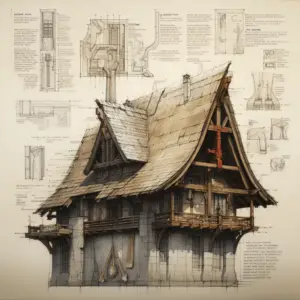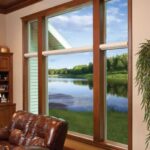Roof anatomy is crucial to your property. It shields from sun, rain, snow, wind, etc. Most homeowners view a roof as a sight to behold. The building envelope includes it.
You don’t need to know everything about the roof, but it will help you make important decisions like installation and repairs.
The roof has an anatomy, identity, and main function like any other structure. Therefore, knowing what those parts are essential. Roof anatomy will be explained in the article.
Table of Contents
The Anatomy of a Roof Anatomy

Structure
If you want a durable, reliable, and finished project, the roof structure creates the base for a roof. The section entails the rafters and trusses, which are beams that form the roof’s shape. Framework and the sheathing or roof deck are sometimes considered part of the structural elements.
Roof Deck/ Roof Sheathing
The primary layer of your roof provides the foundation for other roofing materials and components. Your roof structure is supported by hardwood boards/planks/plywood. Keep your wood’s integrity.
Drainage/ Drip edge
It’s positioned at roof eaves and rakes. The drainage keeps water away from the fascia and roof deck to prevent deterioration.
The roof’s design, arrangement, and slope assist drain water easily.
Ice and Water shield
It is a water-resistant membrane that protects your roof from ice and damage. It safeguards your roof decking and other roofing materials like metal panels and shingles.
The ice and water shield is installed on or around particular areas of your roof, such as penetrations, roof valleys, and roofs containing pitch. It is a must-have because of its functionality.
Roof Underlayment
As the second layer after roof decking, it prevents moisture. Tar paper, or felt (15lb, 3olb, or synthetic), is applied directly to your roof deck for weather protection.
The last line of defense for roof decking if water gets under the shingles. The relevance makes it important for roofing. Different types of underlayment are utilized according on location, environment, and weather.
Starter shingles/It is a layer of materials
The precut row of roofing materials goes underneath the first course of shingles before they are mounted.
Starter Shingles ensure the presence of protective Material between the joints where shingles butt against each other on the roof edge.
They have an adhesive to ensure the sealing of the first row of shingles at the roof edge, thus, promoting the roof resistance against strong winds.
Roof coverings/Material
The roofing materials are often misconstrued by many to be a roof. They make up the prevalence of your roof. Common materials are Metal roofing, cedar shake roofing, tiles, stone, asphalt shingles, slate roofing, and synthetic roofing.
The covering is put over the underlayment and sheathing
The roof covering contributes to the unique appeal of your home. Depending on your material choice, you can increase the value of your home.
Fastener Attachments
Fasteners attach the roofing materials to the underlayment and the deck. They can be roofing nails, metal fasteners for tiles, asphalt shingles, adhesive type paper, glue, tar, etc., used to adhere certain materials to a roof.
Flashing
A narrow sheet metal material covers and protects roof protrusions. They guide water away from chimneys, roof valleys, vents, walls, etc., where leaks may occur, to the downspouts.
Aluminum, steel, or copper flashings should outlast the roof. Outlive meaning it can survive roof remodeling. Your flashing needs an annual examination as part of its maintenance to avoid leaks.
It is essential to prevent water from entering your home.
Ridge Capping

It is done after completing installing all facets of your roof. Ridge capping is the trim material mounted at the top of where two roof slopes join. It is thicker than the standard shingles and pre-bent to form the roof ridges.
Vents
Vents enhance the proper breathing of your attic and home. Without a proper attic ventilation system, your roof’s lifespan will be cut short.
The vents are diversified to choose from as per your ventilation system. For instance, you can use turbine vents, ridge vents without a baffle, solar-powered vents, or powered vents in an active ventilation system.
You can choose from static vents (box vents) and gable-end vents or ridge vents without a baffle for a passive ventilation system.
All vents function well when properly installed, and you have a well-ventilated attic system.
Gutters and Drip edges
They are important in any roof layout as they transport water from the roof, directing it away from the property foundation.
Attic Space
It is the space under the roof, and it needs sufficient ventilation to protect the roofing system. Ventilation guards control the temperatures of the house’s interior during the spring and summer seasons, thus keeping your home at a comfy temperature.
Understanding the general anatomy of a roof gives you the ability to know its layout and formation. It also enables you to see the steps involved in roof construction. If you are set for high-quality roof repairs and upgrades, the information in this article will be of great help.


